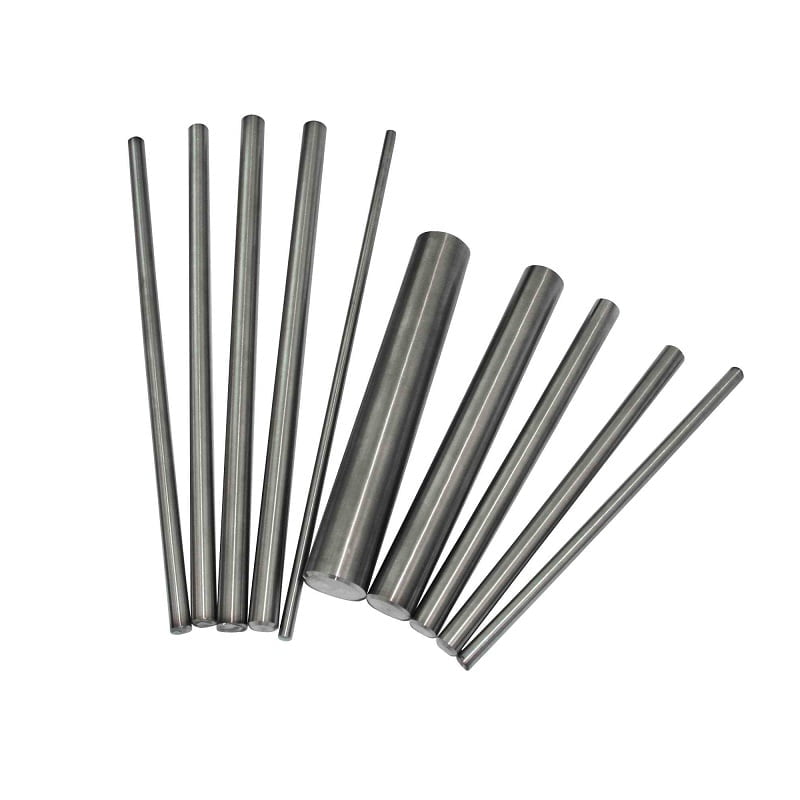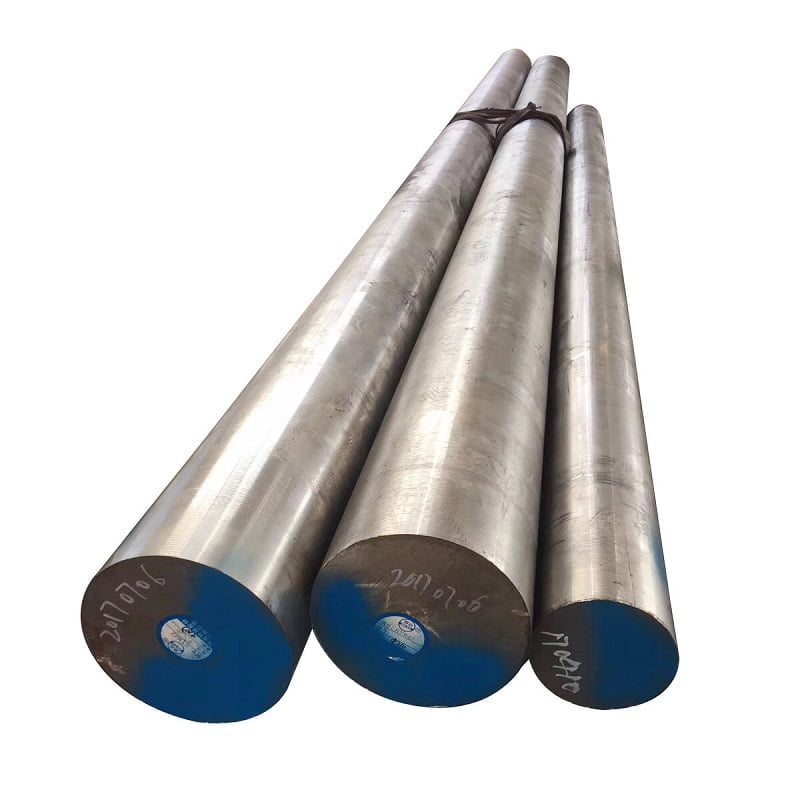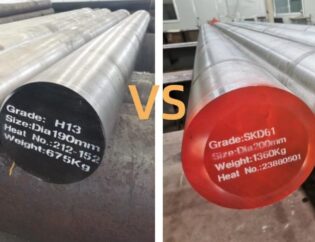
Stahlnoten sind für verschiedene Technik- und Fertigungsanwendungen von wesentlicher Bedeutung, wobei jede Art einzigartige Eigenschaften bietet, die es für bestimmte Verwendungszwecke geeignet sind. In diesem Vergleich werden 12L14 und 4140 Stahl untersucht, um ihre Unterschiede in Zusammensetzung, mechanischen Eigenschaften, Anwendungen, Wärmebehandlungsfähigkeiten, Schweißbarkeit und Kosten hervorzuheben.
Übersicht über 12L14-Stahl
12L14 ist ein kohlenstoffarmer Stahl, der für seine hervorragende Bearbeitbarkeit bekannt ist. Es wird üblicherweise in Branchen verwendet, in denen Präzisionsbearbeitung für die Herstellung hochwertiger Komponenten von entscheidender Bedeutung ist.
Chemische Zusammensetzung von 12L14 Stahl
Die chemische Zusammensetzung von 12L14 ist für seine Bearbeitbarkeit und Gesamtleistung von entscheidender Bedeutung. Die typische Komposition lautet wie folgt:
| nach Extrusionsabschrecken und künstlicher Alterung HBS≥80 | Komposition (%) |
|---|---|
| Kohlenstoff (C) | ~0,12 % |
| Mangan (Mn) | ~0,60 % |
| Phosphor (P) | ~0,04 % |
| Schwefel (S) | ~0,26 % |
| Blei (Pb) | ~0,15 % |
Blei wird hinzugefügt, um die Verarbeitbarkeit zu verbessern und diese Stahlqualität für Präzisionsbearbeitungsanwendungen besonders benutzerfreundlich zu machen.
Mechanische Eigenschaften von 12l14 Stahl
Die mechanischen Eigenschaften von 12L14 spielen in ihren Anwendungen eine entscheidende Rolle. Hier sind die wichtigsten Eigenschaften:
| Eigentum | Wert |
|---|---|
| Zerreißfestigkeit | 58.000 – 75.000 psi |
| Streckgrenze | Ungefähr 38.000 psi |
| Härte | Ungefähr 85 HRB |
| Bearbeitbarkeit | Exzellent |
| Duktilität | Gut für niedrige bis mittelschwere Stressanwendungen |
Anwendungen von 12L14-Stahl
Aufgrund seiner außergewöhnlichen Bearbeitbarkeit wird 12L14 häufig in Anwendungen verwendet, die Präzisionsbearbeitung erfordern. Gemeinsame Verwendungen umfassen:
| Anwendungstyp | Beschreibung |
|---|---|
| Präzisionsgefertigte Teile | Komponenten, die enge Toleranzen wie Armaturen und Ventilkörper erfordern. |
| Befestigungselemente | Geeignet für Schrauben und Schrauben aufgrund einfacher Bearbeitung. |
| Getriebe | Wird für niedrigere Ladegetriebe in verschiedenen Maschinen verwendet. |
| Hydraulische Komponenten | Ideal für hydraulische Armaturen und Komponenten mit konsistenten Abmessungen. |

Überblick über 4140 Stahl
4140 Stahl ist ein mittelkohlenstoffhaltiger Legierungsstahl, der für seine Festigkeit, Härte und hervorragende Verschleißfestigkeit bekannt ist. Es wird häufig in Hochstressanwendungen verwendet, die Haltbarkeit und Zähigkeit erfordern.
Chemische Zusammensetzung von 4140 Stahl
Die chemische Zusammensetzung von 4140 ist so konzipiert, dass sie verbesserte Festigkeit und Resistenz bietet. Die typische Komposition umfasst:
| nach Extrusionsabschrecken und künstlicher Alterung HBS≥80 | Komposition (%) |
|---|---|
| Kohlenstoff (C) | 0.38 - 0,43% |
| Mangan (Mn) | 0.60 – 0,90 % |
| Chrom (Cr) | 0.80 - 1,10% |
| Molybdän (Mo) | 0.15 - 0,25% |
| Phosphor (P) | ≤0,04 % |
| Schwefel (S) | ≤0,05 % |
Die zusätzlichen Legierungselemente wie Chrom und Molybdän verbessern die Härtbarkeit des Stahls und die Verschleißfestigkeit.
Mechanische Eigenschaften von 4140 Stahl
4140 Stahl zeigt hervorragende mechanische Eigenschaften, die es gut für Hochleistungsanwendungen eignen. Hier sind die wichtigsten Eigenschaften:
| Eigentum | Wert |
|---|---|
| Zerreißfestigkeit | 90.000 - 100.000 psi |
| Streckgrenze | Ungefähr 60.000 psi |
| Härte | Bis zu 50 HRC (hitzebehandelt) |
| Bearbeitbarkeit | Mäßig |
| Duktilität | Gut, besonders im geglühten Zustand |
Anwendungen von 4140 Stahl
Aufgrund seiner Stärke und Zähigkeit wird 4140 Stahl in Anwendungen, die hohe Leistung und Haltbarkeit erfordern, häufig eingesetzt. Gemeinsame Verwendungen umfassen:
| Anwendungstyp | Beschreibung |
|---|---|
| Wellen | Wird in Leistungsübertragungskomponenten verwendet, die Widerstand gegen Verschleiß und Verformung erfordern. |
| Getriebe | Geeignet für Hochlastgeräteanwendungen und häufig Wärme behandelt für zusätzliche Festigkeit. |
| Kurbelwellen | Häufig in Automobilanwendungen eingesetzt, aufgrund seiner Zähigkeit und Ermüdungsbeständigkeit. |
| Hochleistungsbefestigungen | Ideal für Anwendungen, die eine hohe Zugfestigkeit und Haltbarkeit benötigen. |
Bearbeitbarkeit
Die Bearbeitbarkeit bezieht sich darauf, wie leicht ein Material während der Bearbeitungsprozesse geschnitten und geformt werden kann, was die Produktionseffizienz erheblich beeinflusst.
| Feature | 12L14 Stahl | 4140 Stahl |
|---|---|---|
| Einfache Bearbeitung | Exzellent; Der Bleigehalt verbessert das Schneiden und reduziert den Werkzeugverschleiß. | Mäßig; Benötigt präzise Bearbeitungstechniken und kann zu einem erhöhten Werkzeugverschleiß führen. |
Die Leichtigkeit der Bearbeitung in 12L14 bedeutet, dass sie häufig für die Produktion von kleinen Teilen mit hoher Volumen bevorzugt wird, während 4140 möglicherweise eine größere Pflege und spezielle Werkzeuge erfordern.
Wärmebehandlungsmöglichkeiten
Die Wärmebehandlung spielt eine entscheidende Rolle bei der Verbesserung der Eigenschaften von Stahl, insbesondere für Anwendungen, die hohe Festigkeit und Härte erfordern.
| Feature | 12L14 Stahl | 4140 Stahl |
|---|---|---|
| Wärmebehandlung | Im Allgemeinen nicht hitzebehandelt; Wird in einem gerollten Zustand verwendet, um die Bearbeitbarkeit beizubehalten. | Sehr hitzebehandelbar, sodass Prozesse wie das Löschen und Temperieren von Härte und Festigkeit erheblich verbessert werden. |
Die Fähigkeit der 4140er, hitzebehandelt zu werden, ermöglicht es, in Anwendungen zu übertreffen, bei denen eine hohe Festigkeit und Verschleißfestigkeit kritisch sind.
Schweißbarkeit
Schweißbarkeit ist ein wesentliches Merkmal, das sich auswirkt, wie leicht unterschiedliche Stahlnoten während der Herstellung miteinander verschweißt werden können.
| Feature | 12L14 Stahl | 4140 Stahl |
|---|---|---|
| Schweißeigenschaften | Nicht für das Schweißen von Blei empfohlen, was die Integrität der Schweißnaht beeinträchtigen kann. | Kann geschweißt werden, obwohl das Vorheizen häufig erforderlich ist, um das Knacken zu minimieren. Geeignete Schweißtechniken und Füllstoffe sollten verwendet werden. |
Der Mangel an Schweißbarkeit in 12L14 kann seine Anwendungen in bestimmten Entwurfsszenarien einschränken, in denen Schweißen erforderlich ist, während 4140 mehr Vielseitigkeit bei der Herstellung bietet.
Kosten und Verfügbarkeit
Kosten und Verfügbarkeit können erhebliche Faktoren sein, die die Auswahl von Stahl bei Herstellungsprozessen beeinflussen.
| Feature | 12L14 Stahl | 4140 Stahl |
|---|---|---|
| Kosten | In der Regel aufgrund von Blei- und Legierungselementen teurer, obwohl sich die Einsparungen aus seiner Vervollständigung ergeben können. | Im Allgemeinen günstiger als 12L14; Erhältlich in verschiedenen Formen und ist aufgrund seiner Vielseitigkeit in der Regel eine breite Marktpräsenz. |
Die Verfügbarkeit von 4140 in verschiedenen Größen und Formen macht es zu einer attraktiven Wahl für eine Vielzahl von technischen Anwendungen.
Zusammenfassung und Fazit
Der Vergleich von 12L14 und 4140 Stahl zeigt signifikante Unterschiede, die jeweils für unterschiedliche Anwendungen geeignet sind.
| Feature | 12L14 Stahl | 4140 Stahl |
|---|---|---|
| Primäre Attribute | Ausgezeichnete Bearbeitbarkeit, niedriger Kohlenstoff | Hohe Festigkeit, hitzebehandelbare, mittlere Kohlenstofflegierung |
| Chemische Zusammensetzung | Niedriger Kohlenstoff; Blei erhöht die Vervollständigbarkeit | Mittlerer Kohlenstoff; Chrom und Molybdän verbessern die Festigkeit |
| Mechanische Eigenschaften | Mäßige Zug- und Streckgrenze | Hohe Zugfestigkeit und Härte |
| Anwendungen | Präzisionsteile, Verbindungselemente, Hydraulikkomponenten | Wellen, Zahnräder, Automobilkomponenten |
| Bearbeitbarkeit | Überlegen durch Bleigehalt | Mäßig, benötigt Präzisionstechniken |
| Wärmebehandlung | Normalerweise nicht wärmebehandelt | Kann Wärme für verbesserte Eigenschaften behandelt werden |
| Schweißbarkeit | Nicht zum Schweißen geeignet | Kann mit geeigneten Techniken verschweißt werden |
| Kosten und Verfügbarkeit | Höhere Kosten, spezielle Bearbeitungsmaterialien | Wirtschaftlicher, weit verbreitet |
Zusammenfassend hängt die Wahl zwischen 12L14 und 4140 Stahl von bestimmten Projektanforderungen ab, z. B. ob Präzisionsbearbeitung oder hohe Festigkeit Priorität ist. Jede Stahlqualität hat seine Vorteile und Einschränkungen, was es für Ingenieure und Hersteller unerlässlich macht, ihre Bedürfnisse vor der Auswahl des entsprechenden Materials zu bewerten. Wenn Sie weitere Fragen haben oder zusätzliche Informationen benötigen, können Sie gerne fragen!

